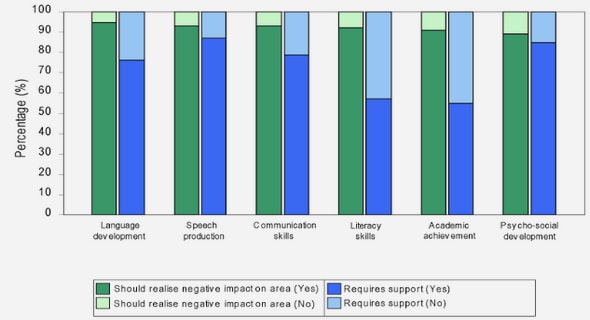(Downloads - 0)
For more info about our services contact : help@bestpfe.com
Table of contents
LIST OF PUBLICATIONS AND COMMUNICATIONS
INTRODUCTION:
CHAPTER 1: BIBLIOGRAPHI REVIE
1. CANNED FOOD MARKET
1.1. Worldwide scale
1.2. Lebanese market
2. MIGRANTS FROM FOOD CANS
2.1. Can constituents and fabrication
2.1.1. Principal materials of cans
2.1.2. Tinplate cans
2.1.3. Electrolytic chromium coated steel (ECCS)
2.1.4. Aluminum cans
2.1.5. Types of cans
2.1.6. Coatings
2.1.7. Main migrants
2.1.8. Regulation relative to cans
2.2. Trace metals
2.2.1. Regulation relative to trace metals in foods
2.2.2. Trace metals in canned food
2.2.3. Summary
2.3. Bisphenol compounds
2.3.1. Regulation relative to bisphenol compounds
2.3.2. Migration of bisphenol compounds in food simulants
2.3.3. Bisphenol compounds in canned foods
2.3.4. Summary
2.4. Global summary
3. ANALYTICAL METHODS FOR DETERMINING MIGRANTS FROM PACKAGING
3.1. Trace metals
3.1.1. Sample treatments
3.1.2. Analytical techniques
3.1.3. Overall method performances
3.2. Bisphenol compounds
3.2.1. Sample treatment
3.2.2. Analysis of bisphenolic compounds
3.2.3. Overall method performance
3.3. Global summary
4. MIGRATION PREDICTIVE MODELING
4.1. Deterministic models based on Ficks’s law
4.2. Other models
4.2.1. Limm and Hollified
4.2.2. Helmroth
4.2.3. Fauconier
4.3. Discussion
5. THESIS OVERVIEW
6. REFERENCES
CHAPTER 2: EFFECT OF STERILIZATION AND STORAGE CONDITIONS ON THE MIGRATION OF BISPHENOL A FROM TINPLATE CANS OF THE LEBANESE MARKET
INTRODUCTION
ARTICLE TITLE PAGE
ABSTRACT
KEYWORDS
1. INTRODUCTION
2. MATERIALS AND METHOD
2.1. Reagents
2.2. Sample collection
2.3. Analytical instruments and conditions
2.3.1. UPLC/Fluorescence
2.3.2. UPLC/MS
2.4. Sample preparation
2.5. Storage conditions
2.6. Procedure used in the experimental design
3. RESULTS AND DISCUSSION
3.1. Quality assurance
3.1.1. Analytical performance
3.1.2. Detection and quantification limits
3.1.3. BPA pre-concentration recovery
3.1.4. Sterilization repeatability
3.2. Peak confirmation by UPLC/MS analysis
3.3. Effect of heat processing
3.4. Effect of storage time and temperature
3.5. Types of cans
3.6. Estimation of long term migration of BPA
4. CONCLUSION
5. REFERENCES
CONCLUSION
CHAPTER 3: BUILDING EMPIRICAL MODELS TO PREDICT THE EFFECT OF STERILIZATION AND STORAGE ON BISPHENOLS MIGRATION FROM METALLIC CAN COATING INTO FOOD SIMULANTS
INTRODUCTION
ARTICLE TITLE PAGE
ABSTRACT
KEYWORDS
1. INTRODUCTION
2. MATERIALS AND METHOD
2.1. Choice of input variables
2.2. Building experimental designs
2.3. Building the models
2.4. Models validation
2.5. Tinplate cans
2.6. Measuring bisphenols migration in food simulants
2.6.1. Standards and reagents
2.6.2. Instrumentation
2.6.3. Sample treatment
3. RESULTS AND DISCUSSION
3.1. Migration of bisphenols in the simulants after can contact
3.2. Migration modeling
3.2.1. Effect of food simulant and storage with non-sterilized cans (Design I)
3.2.2. Effect of process and storage conditions with sterilized cans (Design II)
3.3. Testing models adequacy and validation
3.4. Valuable models application for the industry
4. CONCLUSION
5. REFERENCES
CONCLUSION
SUPPLEMENTARY MATERIAL CHPT.3
CHAPTER 4: PARAMETERS INFLUENCING THE MIGRATION OF TRACE METALS IN UNCOATED FRUIT CANS
INTRODUCTION
ARTICLE TITLE PAGE
GRAPHICAL ABSTRACT
ABSTRACT
KEYWORDS
1. INTRODUCTION
2. MATERIALS AND METHOD
2.1. Reagents
2.2. Sample collection and storage conditions
2.3. Sample treatment
2.4. Instrumental conditions
2.5. Method accuracy
2.6. Statistical analysis
3. RESULTS AND DISCUSSION
3.1. Method performance
3.2. Metal content in canned fruits
3.3. Effect of storage time at room temperature
3.4. Effect of storage temperature
3.5. Effect of can denting
3.6. Effect of leaving opened cans in the fridge
4. CONCLUSION
5. REFERENCES
COMPLEMENTARY ANALYSIS: PRINCIPLE COMPONENT ANALYSIS (PCA)
CONCLUSION
SUPPLEMENTARY MATERIAL CHPT.4
CHAPTER 5: SIMULTANEOUS MIGRATION OF BISPHENOL COMPOUNDS AND TRACE METALS IN CANNED VEGETABLE FOOD .
INTRODUCTION
ARTICLE TITLE PAGE
ABSTRACT
KEYWORDS
1. INTRODUCTION
2. MATERIALS AND METHODS
2.1. Reagents and standards
2.1.1. Analysis of bisphenol compounds
2.1.2. Analysis of metal elements
2.2. Processing and storage conditions of food samples
2.3. Sample preparation
2.3.1. Bisphenol compounds extraction from food
2.3.2. Bisphenol compounds extraction from empty tinplate cans
2.3.3. Dissolution of trace metals
2.4. Analysis of studied contaminants
2.4.1. Analytical instruments and conditions for bisphenol compounds
2.4.2. Analytical instruments and conditions for trace metals
2.5. Method validation
2.6. Statistics
3. RESULTS AND DISCUSSION
3.1. Occurrence of bisphenol compounds and metals in raw and canned food
3.2. Influence of heat treatment
3.3. Migration as a function of storage time and temperature
3.3.1. Migration of BPA and BADGE.2H2O
3.3.2. Migration of iron
3.3.3. Migration of chromium
3.3.4. Migration of lead and cadmium
3.3.5. Migration of nickel, copper and zinc
3.4. Correlation of contaminants levels with food product, can brand and storage conditions
3.5. Effect of can denting
3.6. Effect of heating food directly in the can
4. CONCLUSION
5. REFERENCES
CONCLUSION
SUPPLEMENTARY MATERIAL CHPT.5
CHAPTER 6: GENERAL DISCUSSION
1. INTRODUCTION
2. EFFECT OF HEAT TREATMENT
2.1. Influence of heat treatment on the migration of bisphenol compounds
2.1.1. Contents of bisphenol compounds in food simulants vs. real food
2.1.2. Extent of bisphenols migration after sterilization
2.2. Influence of heat treatment on the migration of trace metals
3. EFFECT OF STORAGE TIME
3.1. Influence of storage time on the migration of bisphenol compounds
3.2. Influence of storage time on the migration of trace metals
4. EFFECT OF FOOD/FOOD SIMULANT
4.1. Contents of bisphenol compounds in canned aqueous, acidic and semi fatty foods/food simulants
4.2. Contents of metal elements in canned aqueous, acidic and semi fatty foods
5. DIFFERENCE BETWEEN PACKAGING AND BRAND
5.1. Contents of targeted contaminants between food packaging
5.1.1. Bisphenol compounds between types of coated cans and glass jars
5.1.2. Release of metal traces from coated and uncoated food cans
5.2. Contents of targeted contaminants between brands of canned food
5.2.1. Difference in the levels of bisphenol compounds between brands
5.2.2. Reduction of bisphenol compounds in can coating
5.2.3. Difference in the levels of trace metals between brands
6. EFFECT OF STORAGE TEMPERATURE
6.1. Influence of storage temperature on the migration of bisphenol compounds
6.2. Influence of storage temperature on the migration of trace metals
7. EFFECT OF CAN DENTING
8. OTHER PARAMETERS
9. WORRYING CONCENTRATIONS
10. VALUABLE ADVICES FOR INDUSTRIES AND CONSUMERS
11. CONCLUSION
12. REFERENCES




